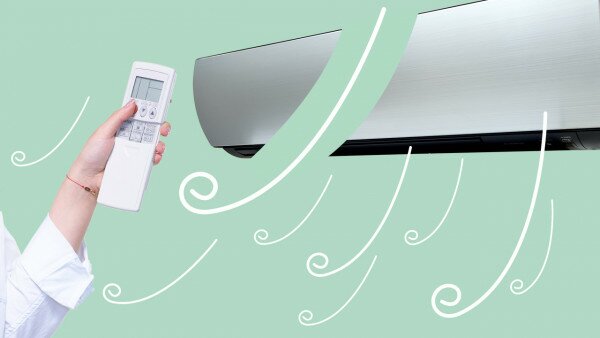To beat the summer heat, many families will turn on air conditioners to keep their home cool. Many air conditioners available in the market claimed top Grade 1 rating in energy efficiency, emphasizing reducing electricity consumption and being environmentally friendly.
The Consumer Council tested 14 models of the split-type inverter air conditioners with both cooling and heating capacities. Test results found that although all models met the requirement of Grade 1 rating in energy efficiency, electricity run up of the samples could vary by 20% and the electricity bill by up to 24%. There are many choices of inverter air conditioners with various energy efficiency ratings in the market. In support of sustainable consumption, the Council suggests tightening of the existing standard of the Mandatory Energy Efficiency Labelling Scheme (MEELS) in the long run to encourage the industry to design and introduce products at higher energy efficiency. Besides, the Council encourages distributors to offer longer warranty period, lower annual renewal fees and maintenance charges to extend the product lifespan.
All the models tested by the Council are commonly called "2 horse-power" split type air conditioners, with prices ranged between $6,180 and $15,300, a difference of over 100%. Among them, prices of 4 models already covered basic installation while 6 others charged an additional of $1,050 to $2,450. The remaining 4 would vary among retail shops. Despite the inverter type air conditioners are generally more expensive than the fixed capacity types, under normal circumstances, such price difference could be offset by savings from electricity tariff in 2 to 3 years.
Although all models tested have both cooling and heating capacities, considering that local families use air conditioners mostly for cooling, cooling capacity of the samples was the primary focus with energy efficiency, noise and air flow rate as other test items. On a 5-point scale, 8 models scored 4 or 4.5 points in overall performance, the remainder got 3.5 points.
A relatively advanced Cooling Seasonal Performance Factor (CSPF) was adopted to assess performance of the cooling capacity of each model. CSPF is calculated based on the ratio of the total amount of heat pumped out from the room in a year to the total electricity consumption in the same period. A higher CSPF means better performance of cooling capacity and more saving in electricity bill. The CSPF of the models tested ranged from 4.61 to 5.77. Based on the grading standard of the existing MEELS, the CSPF of inverter type air conditioners was 4.5 or above, representing all samples meet the requirement of top Grade 1 rating in energy efficiency.
Electricity run up of the models varied substantially, so was the difference in electricity tariff. Assuming consumers leave their air conditioners on for 12 hours a day for 180 days a year, and the tariff is estimated at $1.2/kWh, the annual electricity tariff would be $946 to $1,249, a difference of as much as 24%.
As far as cooling capacity is concerned, a higher value means a faster pace in cooling. With the compressor of all models operating at their full speed, the measured cooling capacity ranged from 4.91kW to 5.38kW. The findings pretty much matched the values claimed by the manufacturers. 3 models were found to have values higher than claimed value by 1.5% or more. 2 models on the other hand were found to be 2.8% and 3.6% lower than the manufacturers' claims. Although the variations were within the 10% tolerance threshold allowed under the MEELS and international practices, the Council is of the view that consumers will expect manufacturers to ensure cooling capacity of air conditioners not lower than the values claimed.
The Council reminds consumers that choosing an inverter type air conditioner with the cooling capacity ("horse-power") matching size of the room can save more energy as the compressor only operates at full load initially to regulate room temperature to the pre-set level. Once accomplished, the compressor automatically will be operated at a lower speed over time.
The dehumidifying performance of the models was varied considerably. Most models scored 3 points or below, and only 1 model obtained 4 points. In general, electricity consumption of air conditioners is higher than that of dehumidifiers. If only dehumidification is required and without regulating the room temperature, dehumidifier will be a more cost effective option.
The report also surveyed the after-sales service for the models tested. 10 models came with one-year whole machine warranties. The remaining 4 had longer warranties of 2 years while warranty extensions cost $600 to $1,500 a year. Within the warranty period, all models provide free on-site inspection for consumers located in city areas. For consumers located in remote areas, an on-site inspection fee of $70 to $450 would be charged for 10 models. Labour charge for maintenance is usually waived within the warranty period for most models.
The Council urges distributors to offer a longer warranty period, and lower annual renewal fees and maintenance charges to encourage consumers to repair usable products, thereby extending the lifespan of the appliances and reducing waste in a bid to promote sustainable consumption.
The Consumer Council reserves all its right (including copyright) in respect of CHOICE magazine and Online CHOICE.




